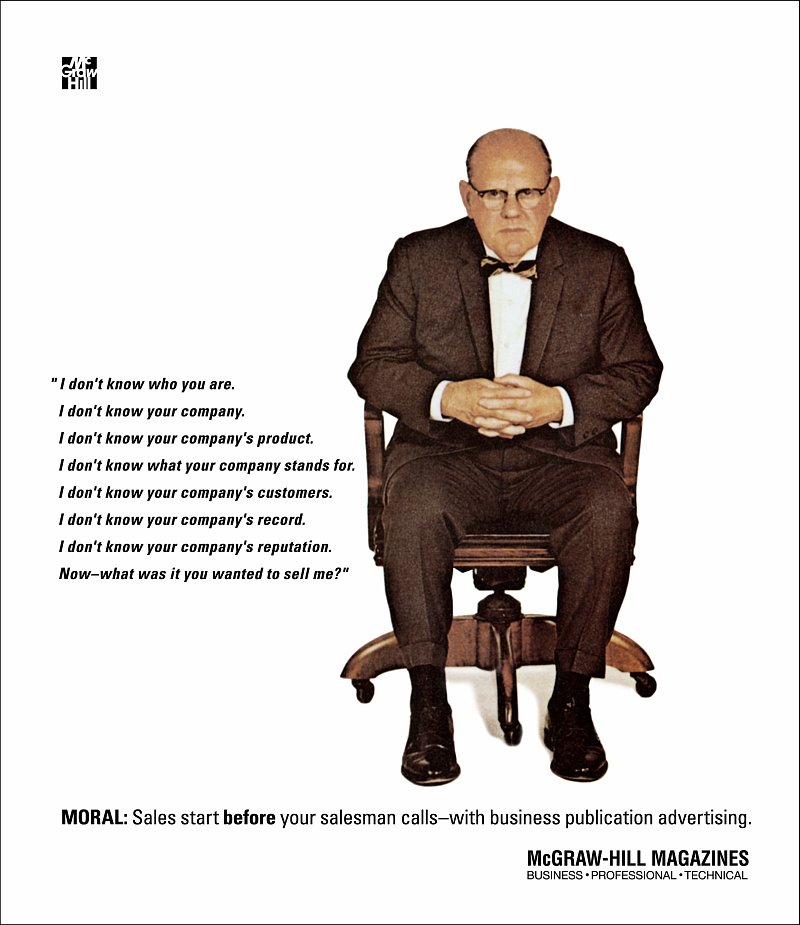“Life can only be understood backwards; but it must be lived forwards.” – Soren Kierkegaard
 The last quarter of 2013 is almost history and as we stand poised to welcome 2014 in just 50 days from today, we hope for a future that is successful, rewarding and where dreams will be realized. Having seen the start of more than a few “new business years” during my career, I’ve learned that you can do one of two things in preparation for the coming year. You can yet again try to create a brand new marketing strategy for the coming year or you can pause, look back and do some serious reflecting, resolving to change, or improve some aspect about how you will initiate your future marketing campaigns. For some people, looking back over the past year may be something better left in the rearview mirror; on the other hand, burying your head in the sand can be seen as the primary ingredient in a recipe for another disappointing year…and you know how much the CEO/President/Owner/ Founder loves that kind of thinking and pending poor results. So before one celebrates the dawn of a new year…take time to ask yourself what are you going to do to change? What does success in 2014 look like to you and your executive management team?
The last quarter of 2013 is almost history and as we stand poised to welcome 2014 in just 50 days from today, we hope for a future that is successful, rewarding and where dreams will be realized. Having seen the start of more than a few “new business years” during my career, I’ve learned that you can do one of two things in preparation for the coming year. You can yet again try to create a brand new marketing strategy for the coming year or you can pause, look back and do some serious reflecting, resolving to change, or improve some aspect about how you will initiate your future marketing campaigns. For some people, looking back over the past year may be something better left in the rearview mirror; on the other hand, burying your head in the sand can be seen as the primary ingredient in a recipe for another disappointing year…and you know how much the CEO/President/Owner/ Founder loves that kind of thinking and pending poor results. So before one celebrates the dawn of a new year…take time to ask yourself what are you going to do to change? What does success in 2014 look like to you and your executive management team?
Speaking for myself and our firm, the end of each year is met with a healthy dose of optimism for the coming year. We see 2014 through a lens of hopefulness, that things will indeed get better. Is that just us or will you and your organization also view the coming year with a level of anticipation that you haven’t had for a few years? Hey, it’s been tough for most everyone out there but let’s remember that at least a few organizations — perhaps your own competitors — have fared better than most despite these trying times. So what have they done to plot a course for a more optimistic and profitable path for success in 2014?
Depending on marketplace factors coupled with how well you were able to strategically position and market your company, the past year was either seen as a success or another year of disappointment. Success if you were able to grow your share of the proverbial pie (maybe at the expense of your competitors) or be sufficiently positioned to stay in business to fight the fight for another year. Or disappointment if things didn’t turn out so well because of…(you can fill in the blank). The question that begs to be asked here is, how much of last year’s success or disappointment was because of something you had no control over, such as good luck or bad luck, and how much was because of something you did or didn’t do given how the marketplace presented itself? I’ve found through personal experience this is the time to be totally honest with yourself. As the quote goes: “Being entirely honest with oneself is a good exercise.” – Sigmund Freud
Hey, I’m all for a bit of luck but you probably don’t want to continue betting future success on lucky things happening in the coming year. With this in mind, here are a few questions to ask yourself as thought starters as you begin the process of looking in the rearview mirror to last year and through your windshield to the next:
As marketers, one thing we know for sure is that change will not stop in 2014. The economy will continue to shift on us —hopefully with less drama. But by reflecting back on 2013, taking control of your marketing activities rather than being tossed around by the waves in the marketplace, along with thinking optimistically about what 2014 can hold, 2014 might actually be a year worth celebrating. It will be for us and hopefully will be for you as well.
####
Rolf Gutknecht is vice president, director of account services for LA ads. To discuss your thoughts with Rolf on this blog or any marketing matters, email via this link, or visit www.LAadsMarketing.com. You can also connect with Rolf on LinkedIn.
 The life of a hummingbird rarely exceeds four years. The life expectancy of a Marketing Director (or CMO or VP of Sales & Marketing) at any given company is even less than that. The typical tenure these days is a little more than 3 years and this is up from about 26 months in 2004. In fact, as you stroll through the offices at many companies, it’s an easy bet which executive is a dead man (or woman) walking: the Marketing Director.
The life of a hummingbird rarely exceeds four years. The life expectancy of a Marketing Director (or CMO or VP of Sales & Marketing) at any given company is even less than that. The typical tenure these days is a little more than 3 years and this is up from about 26 months in 2004. In fact, as you stroll through the offices at many companies, it’s an easy bet which executive is a dead man (or woman) walking: the Marketing Director.
What are some of the reasons causing such a short tenure? What are some things a Marketing Director can do to be successful? How much of that is on the company and how much is brought on by the individual?
Ok, so how much of this is do you see or experience in the world that you live in? If you’re like the vast majority of Marketing Directors in this country, you see any of these issues popping up on a fairly regular basis. Here are a few things to consider in order to make sure you’re not having to call your executive recruiter anytime soon.
While the marketing landscape changes so quickly, the good news is that a Marketing Director can succeed in the face of headwinds no matter which way he/she faces. It may be more challenging than it should be, but stand true to your brand, be current and always in the know, and be bold enough to make a difference….otherwise, chances are, you might be dusting off that resume.
At my daughter’s college volleyball game this past weekend, I struck up a conversation with a guy who let it be known that he was the Director of Marketing for a company that owned a few hospitals. Knowing something about hospital marketing, I asked him about his competitor’s marketing activities and he then told me he thought one competitor was doing this and that another was doing something else…he thought. I asked him how sure he was about those things and he said “Honestly, that’s why I said ‘I think that’s what they’re doing’ because I really don’t know for sure.”
 With more work to do with less people, budgets and services, along with not putting in place research that would tell them differently, it’s easy to see why lots of companies don’t really know how their competitors are marketing themselves and their products. One thing we all know for sure is that times have changed and, as a result, it’s more critical than ever to have competitive intelligence for the benefit of the company’s future…as well as not having your boss say “What do you think about the new ad for ABC Widget?” and you haven’t a clue. It’s just not a good place to be…I know.
With more work to do with less people, budgets and services, along with not putting in place research that would tell them differently, it’s easy to see why lots of companies don’t really know how their competitors are marketing themselves and their products. One thing we all know for sure is that times have changed and, as a result, it’s more critical than ever to have competitive intelligence for the benefit of the company’s future…as well as not having your boss say “What do you think about the new ad for ABC Widget?” and you haven’t a clue. It’s just not a good place to be…I know.
So what can a budget-challenged marketing professional do to track the competition without taxing already limited resources?
Let’s start with a few basics: Know who all your competitors are–not just the obvious ones, but the ones flying under the radar as well. Simply put, competitors can be direct (those offering nearly identical goods or services as you do) or indirect (those offering different types of products that answer the same needs). Staples and Office Depot are direct competitors; Sam’s Club is an indirect competitor.
From that point on, it’s about keeping your ears and eyes open. Again, while it seems oh so obvious, when was the last time you looked at a trade magazine or business journal or dug around online to see who’s saying what to your customer or prospective customer? What did the competitor’s ad say; the trade show booth look like; how did their packaging show on the shelves; or what did their last promotion look like? And let’s not forget about all their online initiatives.
On that note, here are some things I do to get intelligence on “the other guys”. An easy place to start is with Google Alerts. Plug in the name of the competitor or associated products and let Google send you daily messages whenever related content appears online.
Then there are the websites. Ask yourself when the last time you visited a competitor’s website and what did you see? For example did you notice things like the kind of content and the different formats used; any social media networks they are part of; what media coverage they received and the different topics they issued in their press releases?. What about looking at their content, which will give you an idea of what they’re trying to rank for. And here’s one for you: how many different websites do your competitors have? It’s quite possible that maybe some of your competitors have more than one website. Time to look for them.
You can also check out the social media profiles of your competitors on Facebook, LinkedIn, Twitter, etc. or use a social media search engine such as SocialMention.com to see the kind of content they post and who they follow and who follows them. It can also reveal what others are saying about your competition, good and bad. And then there are corporate blogs. Studying the blogs by your competitors, if they have any, can help you know what kind of topics and categories they cover because it will help you ensure that your blog follows a different and better messaging strategy.
For those that are saying “yeah, yeah, yeah, what else?”, well, a backlink analysis of your competitors’ sites will give you a basic idea of where they are getting their links from. For this you can use sites like Open Site Explorer. They show up to 1,000 backlinks for free and even more if you use their paid version. Backlink analysis often brings up sites where your competitors might be advertising and those links give you information on some of these popular sites (they did some research – gain from their knowledge).
Did you know about a little known tool from Google called Double Click Ad Planner? It’s for finding out detailed demographic information about your competitors’ customers. As well as giving you reliable figures on how many visitors your competitors’ websites get, you can also find out the age of their customers, income, gender, education level and more. And while we’re on the subject of Google, if Google’s the one ranking your business against your peers, then it makes sense to understand who Google thinks you’re similar to, right? Here’s food for thought: type in your own URL in the searchbar and see what comes up. You may be surprised.
So, am I trying to intimidate you by showing you just how much competition there is out there today? Nope. But it’s important that you’re aware of it so that as you monitor competitors’ actions, you’re looking at the right sites and in the right direction. Because times have changed and your competitors are no longer just the names you’ve always known. Your competition is anyone who gets themselves in front of YOUR customer’s line of sight. Frances Bacon’s quote “Knowledge is King” couldn’t be more right on.
In my day-to-day work, I speak and meet with a number of companies that are really good at what they do. In fact, some are just outstanding at their specialty or niche. The problem is that too few people know about them. You practically need to trip over them to know that they exist.
Almost invariably, the VPs of Sales & Marketing for these companies voice their frustrations over the fact that while the company is good at doing what they do, they’ve not grown sales, nor increased their customer bases or product volumes, nor enhanced their brand visibility as their executive management team would have liked. In many ways, their companies end up becoming their respective industries’ dreaded “best kept secrets.” If this sounds painfully familiar, let me offer up a reason why this has happened and how to avoid this trap.
First, one needs to remember that there are two different sides to your business. One is what I call “inside reality” and the other is “outside perception.” The “inside reality” are all the things your business does that makes it valuable to customers and gives you a competitive advantage in the marketplace. It’s all your skills, people, expertise, service, commitment to excellence, passion, and the way you conduct your business.
I’m sure that if you asked your customers why they bought from you, they could tell you something quantifiable, specific, and instantly obvious. They might point to specific benefits for doing business with you and say, “That’s why I do business with you, that’s why I refer my friends to come here, that’s why I’m a loyal customer, that’s why I don’t mind paying a bit more for your products, that’s why I keep coming back.”
The problem then isn’t your “inside reality” but the “outside perception,” which is how prospects PERCEIVE your company, if they perceive it at all. Very commonly, there’s a fundamental disconnect between your inside reality and outside perception.
See, regardless of how good you are, or how good your “inside reality” is, your prospect isn’t going to be able to figure it out based on marketing that doesn’t address their outside perception. Take, for example, a bank that offers personal service. Their inside reality is they greet every customer by name, open the doors as each customer enters and leaves, and offer individual financial advice based on the customers’ specific banking needs. We’ll also assume their current customers are genuinely impressed. But the outside perception of non-customer prospects is that all banks are pretty much the same and all talk about personal service while most don’t deliver on the promise – and it’s not really that important to them anyway. Once a bank starts from that outside perception as the basis of their marketing, the solutions become entirely different. And so do the results. But the bank that continues to market based on such inside realities, especially in a non-creative or expected manner, will remain invisible to prospects because they’ve seen it all before.
You have to start by seeing your marketing through the eyes of a jaded, disinterested prospect who thinks they know all there is to know about you, or at least about the business you’re in.
So while “best kept secrets” might be seen as good for restaurants, traffic shortcuts and travel destinations, they’re NOT great for business. Don’t get lost in the noise. Whether it’s online, offline or thru social media channels, wave your ‘marketing arms’ and let people know you’re there. Because being in business and not promoting your value as you should is like winking at a cute girl (or guy) in the dark. You may know what you’re doing but she or he sure doesn’t.
You’d be hard-pressed to find someone who’s going to describe today’s economic marketplace as anything but temperamental. The natural inclination is to take a defensive hunker-down mentality, downsize, and play it safe. The truth is, however, you should be looking at things (especially your customers) quite differently.
Most businesses look at their customers from the inside-out based on what they want to deliver. (In other words, you’ve created your own Kool-Aid and you’re drinking it, so your customers should too, right?) But customers see any business from the opposite perspective, from the outside-in.
Let’s take these two views apart for a moment.
Inside-Out thinking begins by asking, “What are we good at? What are our capabilities and products? How can we use our resources more efficiently?” This thinking limits the company’s business opportunities because it means the company is less sensitive to how the customer is interfacing with the market. They’ve slipped into thinking it’s “all about us and what we sell.” Inside-Out companies are surprised by poor sales results. They don’t feel threatened when a new competitor enters the market. They’re out of touch with what value they really bring – or don’t bring – to their customers, or what their customers think of them compared to competitors. In short, their mindset is “Here are our products and services and this is how we help you.” The problem with this approach is that it relies on your customers having to work to find a place for your solutions in their lives.
Alternatively, companies that think Outside-In focus on the customers’ point-of-view. They stand in the customer’s shoes and view everything the company does through the customer’s eyes. They depend on marketing to increase the conversation they have with their customers which in turn allows them to seize on business-building opportunities. They ask their customers what their upcoming needs are and then figure out how to give it to them. By shifting the focus so significantly, they open up a much broader set of opportunities. These companies don’t wait around for change to happen but rather they create change by seeing their world through their customers’ eyes, allowing them to more quickly meet the customers’ needs.

The first tablet PC's were designed based on the manufacturer's point-of-view; Apple's iPad was designed from the consumers'.
A perfect demonstration of the difference is tablet computing. Tablets have been around for years, fundamentally as flat computers…in search of markets who need them. Apple, on the other hand, looked at how consumers use the Internet, music, photos and video content, and came up with a convenient form factor that is, in essence, an Internet devise, not a computer. The rest, as they say, is history. That’s Outside-In thinking at its best.
So what’s this all mean? Well, fundamentally, if you’re not stepping out of your comfort zone and taking a hard, honest look at your business and its products through your customers’ (and non-customers’) eyes, you’re putting a lid on your growth. If you’re not communicating to your customers on their terms, they simply won’t care. Having an Outside-In attitude ensures that your company delivers the value buyers actually understand and appreciate. Conversely, the old phrase “if you keep doing what you’ve been doing, you’ll keep getting the results you’ve been getting” has never been more true.
Alright, business hasn’t turned around as quickly as you’d like – or as quickly as anyone would like. So your customers aren’t throwing their spending money at you any more than you’re shelling out dollars to hire additional staff, add new locations or expand your advertising reach.
Instead, if you’re like most companies, you’re continuing to be as parsimonious with your spending and investing as good business judgment dictates, right? That means you’re more focused on sales than on marketing, since marketing means spending money whereas sales means making money, right again?
Many businesses have grown their sales force while decimating their marketing departments. They’ve turned from brand-building to such “instant gratification” sales-based marketing strategies as direct response and SEO. At the same time, they’re making price the deciding factor.
What could possibly be wrong with that?
So let me propose two basic flaws in that kind of approach.
First, the further away from image and brand marketing you move, the less the customer is predisposed to buy from you regardless of price, since your brand is no longer the top-of-mind preferred choice. That means A) you have to wait until the customer is ready to buy and not a second before, and B) you are now set up for trading exclusively on price since your value proposition has taken a distant back seat…and there’s always a competitor who will come along with a cheaper product or service.
The second strategic flaw is that you’re now doing exactly what your competition is doing, hunkering down and playing the DR/sales/price game at precisely the time advertising rates are the most affordable they’ve ever been. Today, you can negotiate the most advantageous ad programs and one-up your competition with strong visibility while they’re still virtually invisible.
The opposing argument might be that in this sucky economy consumers are more price-focused than brand focused. And yet…
Why is it that sales of Apple’s iPad, an absolutely non-necessary (but really great) product, are booming? With each new iteration of the iPad, a $600 – $800 purchase, there are lines of anxious shoppers waiting outside the Apple Store. Simply, Apple presents a fantastic value proposition in its advertising that has nothing to do with price. The Apple brand and the iPad experience are king. Their strategy is so successful that in 2011, Apple sold more iPads in its last quarter than HP sold desktop computers all year!
The true job of advertising and marketing is to establish a consumer’s desire in advance of asking for the order. Without this first stage, building desire and brand equity, the selling process is exponentially more difficult. Any wonder why the sales cycle for most businesses has doubled or even tripled over the past few years as marketing budgets have been cut?
This is nothing new. In fact, the business publisher McGraw Hill addressed this very issue in a brilliant ad that ran in the early 1960s. In essence, the ad demonstrated that without marketing laying the foundation of understanding and desire prior to the sale, the barrier is significant.
So you’ve been given a gift, as it were, in the form of a recession. From a marketing perspective, your competitors are asleep at the wheel, and you can afford marketing visibility as you never have before. Here’s your chance to let them suffer the recession while you profit from it. How will you handle the opportunity?